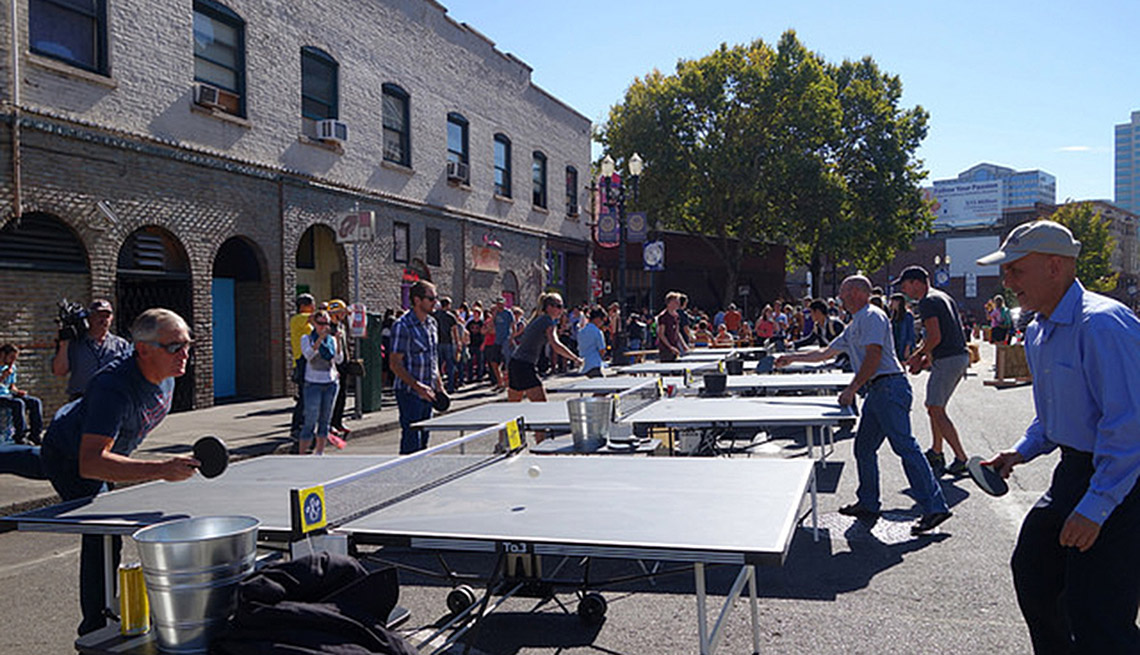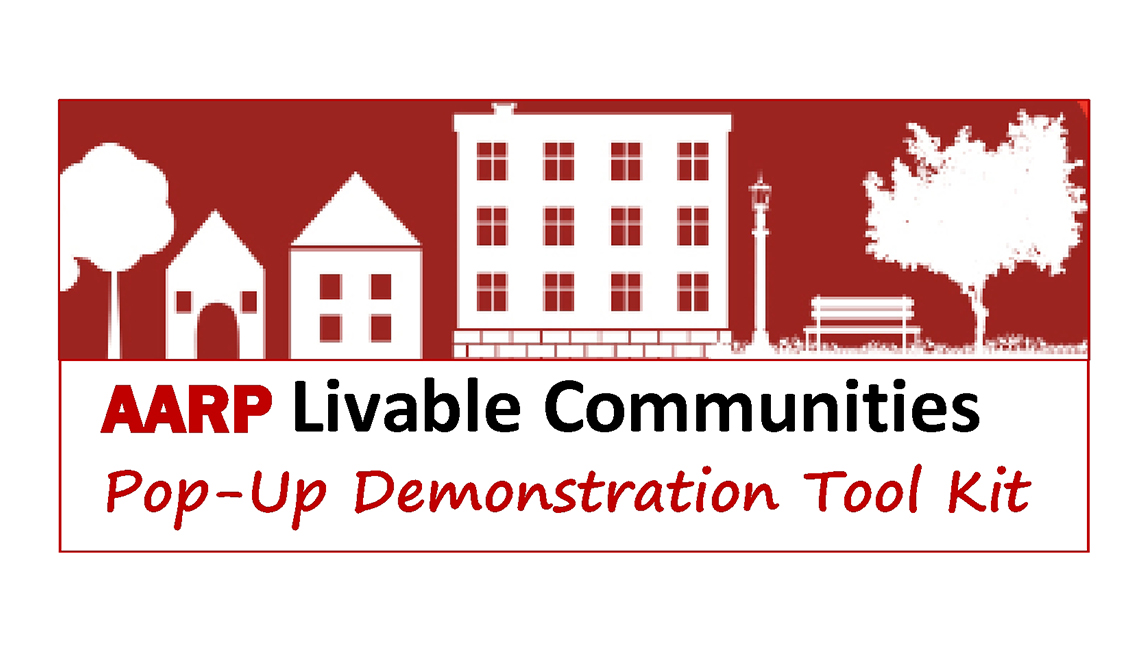Project: Pop-Up Road Diet and Plaza
Location: Northwest 3rd Avenue, Portland, Oregon
The Goal
Turn a troubled and underutilized three-lane vehicle roadway into a vibrant but safe shopping, dining and entertainment destination
The Backstory
The downtown Old Town Chinatown district of Portand, Oregon, is populated by bars, restaurants, offices and social services. The busy area, which is plagued by a street grid of roads that were built for mid 20th-century traffic, features overly wide, three-lane one-way streets that have become a setting for gangs, drug dealing, gun violence and prostitution.
Seeking to attract more people and legal activities, the city began to promote Old Town Chinatown as an entertainment district and it closed three blocks of the area to traffic from 10 p.m. to 3 a.m., every Friday through Sunday. The closures, while successful in curbing the number of late-night crime incidents, received harsh criticism from business owners who disliked the construction zone vibe of the constant closures.
Frustrated by city officials saying it would take several years to even consider a major redesign of 3rd Avenue through Old Town, a coalition of 30 Old Town bars, restaurants and entertainment venues teamed up with the advocacy organization Better Block PDX to develop a district redesign plan.
The Project
Better Block PDX transformed the roadway into a single lane for autos. The lane was then bordered by wooden planters that helped define a protected bikeway, and opened up more than 1,000 square feet of new "pedestrianized" spaces for people to walk, socialize, eat and relax.
The new people-friendly spaces featured sidewalk cafes, a marked crosswalk and a huge, new public plaza in front of Voodoo Doughnuts, a popular tourist destination. In the adjacent one-block-long Ankeny Alley, cars were prohibited so people could sit outside several eating and drinking establishments.
The plaza space proved particularly popular during the demonstration since it was decorated with ping-pong tables, art activities and hay bales for temporary seating. A unique mix of people — residents, workers, tourists and the homeless — shared the space.
The Timing
The project was open for a three-day period in October 2014.
The Logistics
In order to ensure accessibility along the narrower Ankeny Alley roadway, the event organizers collaborated with the city's fire department, which successfully maneuvered a fire truck down the single vehicle lane.
The Costs and Crew
The 3rd Avenue Better Block project cost roughly $8,000. The Better Block team raised funds for the materials, partnered with local businesses and property owners to secure meeting and storage space, and organized dozens of volunteers to construct the installation. The advocacy group also worked directly with the Portland Bureau of Transportation to approve the design and support the rollout of the project.
The Outcomes and Next Steps
The project highlights the economic case for people-oriented streets. Within a year of the demonstration project, the city invested roughly $140,000 in the area by painting crosswalks where there had been none and by re-striping Northwest 3rd Avenue to remove an auto lane and add a double-buffered bike lane.
The city also installed its first "creative crosswalk" (at Northwest 3rd and Davis streets), featuring a pattern of raindrops and a large umbrella.
The Portland Development Commission provided an $80,000 grant to the Ankeny Alley Association to develop a public plaza.
Discussions are happening about creating a Local Improvement District in which local businesses tax themselves to raise funds for implementing safety, livability and other projects.
Learn More
Page Published Summer 2016
Stay Informed — For Free!
AARP.org/Livable
Enter a topic, name, place, etc.







